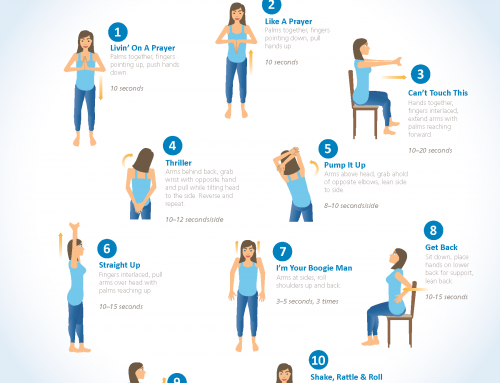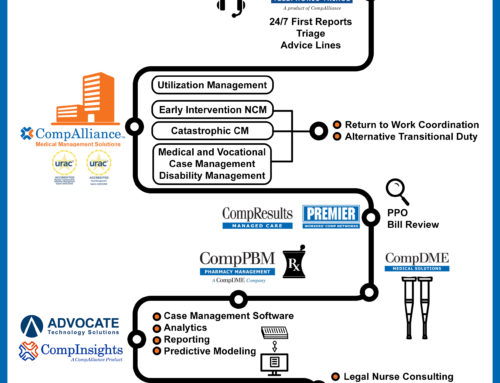In Part 6 of this series, dated 11/27/2018, I discussed the “What’s in It for the Attorney” regarding RTW. Today I will discuss the common perceptions, misconceptions and the “What’s in it for the Employer”, and a best practice statement by the IAIABC. Please refer to my post dated 9/26/2018, for the list of all stakeholders we identified.
Perception of Employer Involvement in the Return to Work Process
The perception of employers is that they resent the worker filing the claim, or don’t want the worker back until they are 100% recovered from their injury. Their priority is reducing insurance costs and not the well-being of the injured worker.
Reality of Why Employers Should Care About Return to Work?
The reality is that indirect costs to an employer of a workplace injury (lost productivity, rehiring, overtime and retraining) can be 5 – 52 times more than the insurance costs. Unnecessary or preventable disability leads to an overall increase in insurance premium due to an increase in experience modification.
Not bringing a worker back leads to distrust, decline in morale, and damages the employer’s relationship with current workers.
What Works? Opportunities for employers detailed in the IAIABC paper titled, “Return to Work; A Foundational Approach to Return to Function”
- Trust!
- Create an environment where workers know there is a RTW program in place if they are injured
- Provide basic information and expectations to the Injured Worker about the workers’ compensation system in their jurisdiction
- Positive safety culture
- Up-to-date, job-specific regular and light- duty job descriptions
This is just a sampling of the employer interventions listed in the IAIABC “Return to Work: A Foundational Approach to Return to Function” paper.
All employers, regardless of size, must remain connected to the injured employee during the recovery period, even while they are unable to participate in any form of return to work. Staying connected to the worker while they are off work increases the likelihood of a return to work at the soonest possible time.
As soon as the injured employee is medically capable of performing meaningful work, the employer should be looking for ways to bring that employee back into the workplace in modified or alternate duties. This connection will also improve overall employee engagement.
Ultimately, employers have significant influence on the injured worker outcomes and cost of their workers’ compensation claims. Accountability is one of the greatest challenges of an effective return to work program and holding all parties accountable ultimately lies with the employer. While they may not control specific medical interventions or benefit levels available in their state or jurisdiction, there are several approaches they can take advantage of to prevent chronic or long-term disability, thus reducing the duration of a small population of claims that represent the greatest costs in any workers’ compensation system.
Whenever I attend a conference, I gravitate to the sessions on RTW, to hear about real life examples of the success of RTW programs. At the 2018 National Disability and Workers’ Compensation Conference (NWCDC) there was an excellent session presented by two employers of temporary workers, Kelly and TruBlue. Though their specific approaches to providing Advocacy for the Injured Worker varied, the common thread between the two employers was providing clear and timely communications for the Injured Worker, having a meaningful light duty transitional program and ensuring the Injured Worker knew the employer cared about them (empathic) and provided appropriate and excellent medical care when it was needed.
Both companies experienced significant decreases in lost time and increased cost savings. But more importantly their Injured Workers felt the caring and participated more fully in their Return to Work plan.
In a second session at the NWCDC Conference, Bill Zachry of the Sedgwick Institute and Kathy Schroeder of Office Depot discussed methods for “Minimizing Lost Time”. They noted Return to Work problems become irreversible over time, the linkage to the employer gets lost and rather the employee links to the concept of a “sick patient”. They suggest you should know your audience and how they like to communicate. For example, Baby Boomers: phone calls and hard copy, Gen-Xers: emails, calls, soft copy, Millenials – prefer text.
Mr. Zachry and Ms. Schroeder reinforced one of the best solutions to insure no permanent loss of job is to provide a transitional return to work. They stated it is essential this transitional return to work is meaningful and not punitive in nature. They recommended you ensure the corporate culture encourages prompt reporting of all claims without negative repercussions and align financial incentives to encourage prompt reporting and accommodating modified duties.
They also discussed methods for the employer to increase communication and education of the claims examiners working with their claims to ensure knowledge of the availability of modified duties, flagging all suspicious injuries for special handling and prompt investigation and immediately reporting all injuries.
Good employers reinforce, by their actions, the idea that employees are their greatest asset. Multiple studies show that some of the strongest predictors of long-term disability following an injury include an absence of employer accommodations, a lack of light-duty return-to-work options and injured employees who feel their employer does not care about their well-being. By promoting early and safe return to work, employers can reduce labor costs, increase productivity, and improve their branding.
In Summary
Effective return to function is a societal obligation that must be embraced by employers, regulators, injured workers, co-workers, carriers, caregivers, and vendors; all the parties that play active roles in an injured person’s life, are responsible for helping them return to a productive, contributory role in society.
So where do we go from here? We have a long, winding road ahead of us, but we’re up to the challenge. The IAIABC Disability Management and Return to Work Committee has formed an action plan team to work on ways to get the paper in the hands of different stakeholder groups. I have just summarized some of the initial recommendations in this series of seven blog articles.
The Committee is also working on a follow up to the RTW paper, which will address best practices and strategies for disability prevention. The IAIABC would be happy to hear from other organizations that are facing similar issues or have gotten beyond these issues and have lessons they can share. It’s through this sharing of information that we all improve the lives of people who are impacted by workplace injuries.
You can find the paper at www.iaiabc.org/return-to-work-paper




